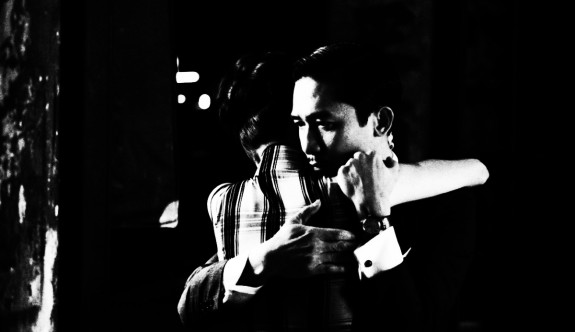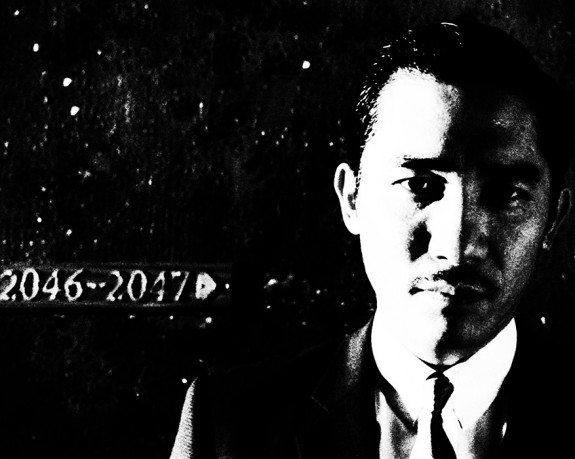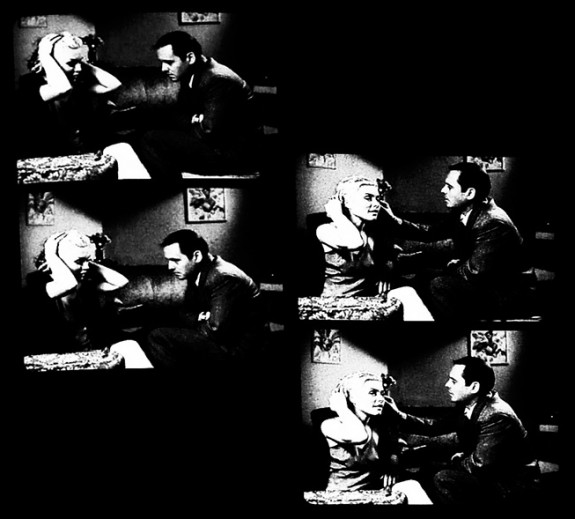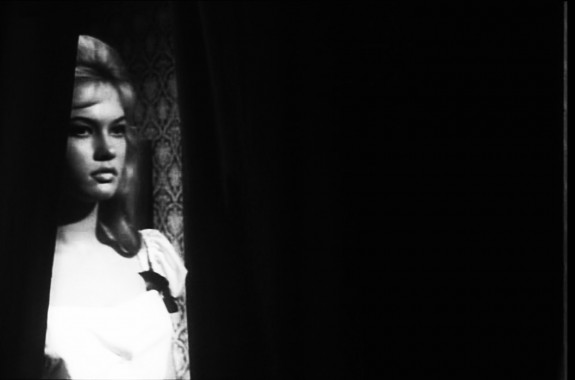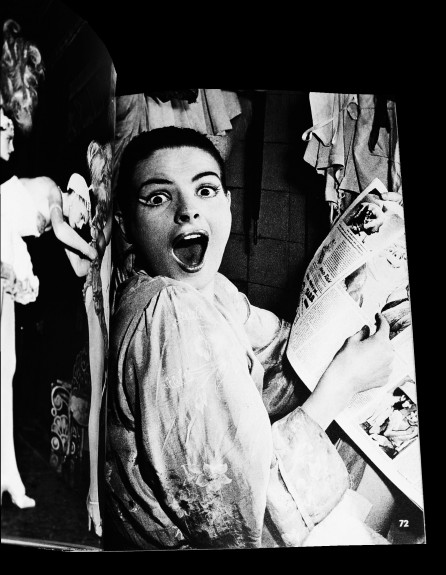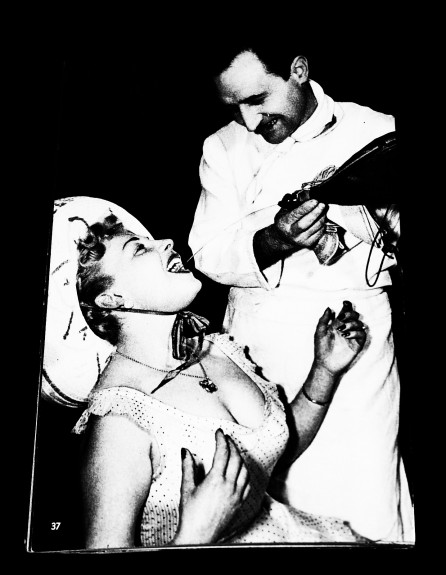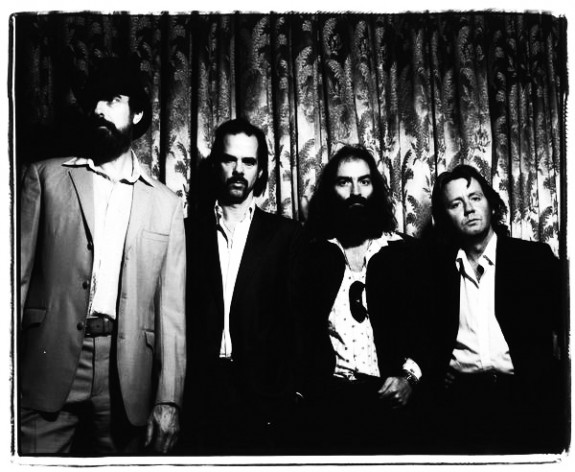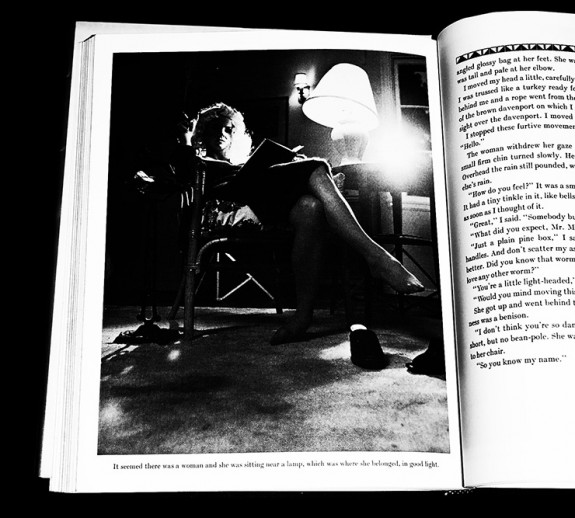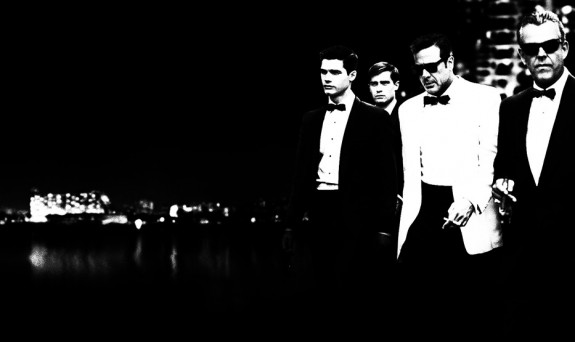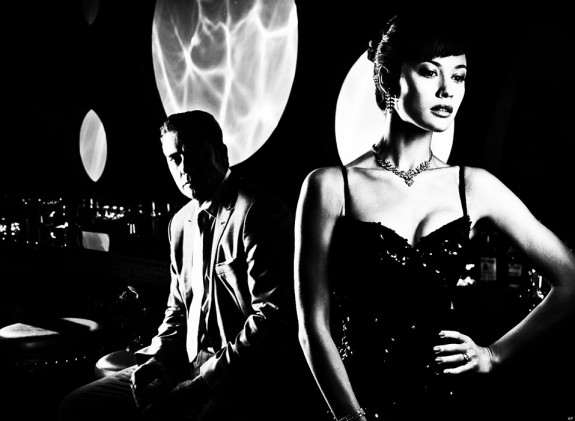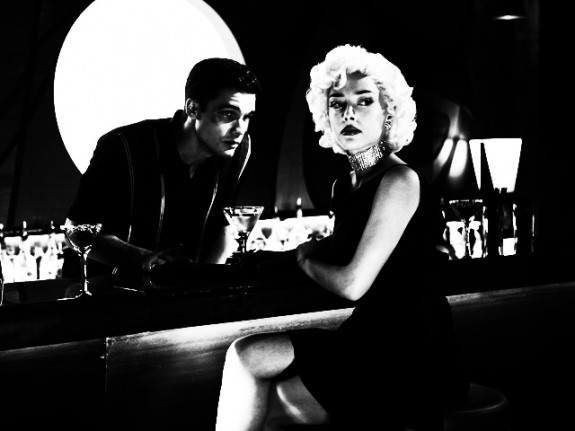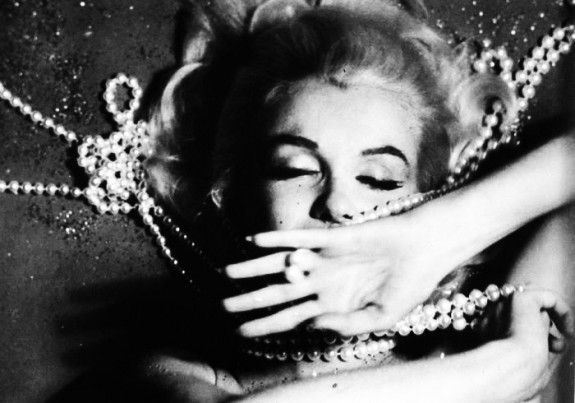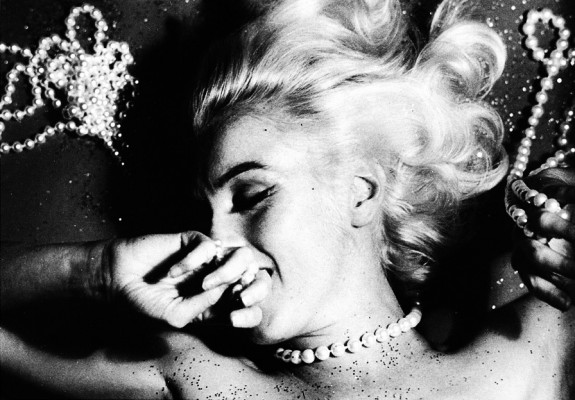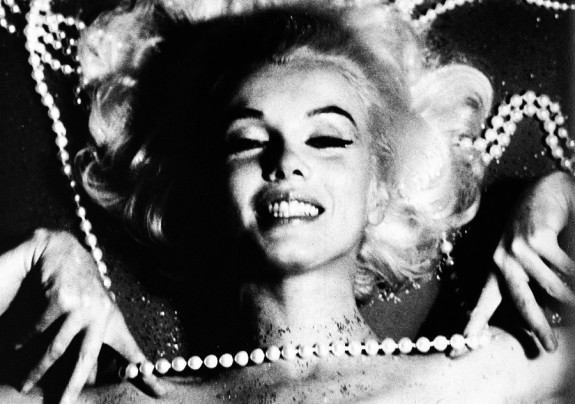Trails and Influences
-
Jim Jocoy’s We’re Desperate, The Cramps and cuckoos in the nest
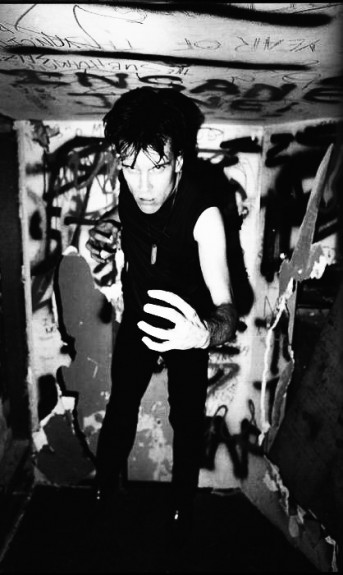 There’s a certain kind of nightlife photography book / tradition that I seem to have been repeatedly drawn to over the years (and probably also amassed more than one or two of them on my bookshelves).
There’s a certain kind of nightlife photography book / tradition that I seem to have been repeatedly drawn to over the years (and probably also amassed more than one or two of them on my bookshelves).They take the form of a collection of quite formal photographic portraits of subcultural / nightlife inhabitants – often using the blank walls, corners and backrooms of those estabilishments as fleeting studios and backdrops.
Along which lines, I would probably look towards Derek Ridgers When We Were Young that focused on London’s fashionable club and subcultural groupings from the late 1970s to 1987 (published by photoworks in 2004), the 1980s post-punk gathering Paradiso Stills by Max Natkiel (originally published by Fragment in 1986, reprinted by Voetnoot in 2013), Geordon Nicol’s multi-snapshot New York club recording Misshapes (2007, MTV Press) and more recently Oliver Sieber’s 7-year international photographic odyssey Imaginary Club (BöhmKobayashi / GwinZegal, 2013).
One particular book that I have returned to the most would be Jim Jocoy’s We’re Desparate, a capturing of late 1970s Southern California/L.A. punk/no-wave/post-punk nightlife dwellers (clubkid forerunners?) in a manner similar to the aforementioned portrait like manner.
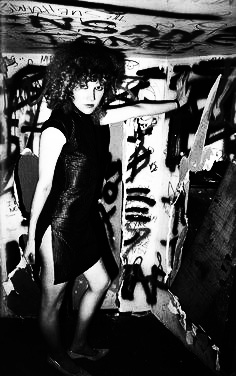 And of all the photographs in that book, the ones that come back to me are probably the least typical – those of b-movie creature from the black leather lagoon mutant rock’n’roll world creators Lux Interior and Poison Ivy of The Cramps.
And of all the photographs in that book, the ones that come back to me are probably the least typical – those of b-movie creature from the black leather lagoon mutant rock’n’roll world creators Lux Interior and Poison Ivy of The Cramps.Just as in wider life, culture and music, they seem like cuckoos in the nest, separate to those that surround them.
That is heightened by their particular backdrop being, well, more literally cramped, more decorated and colourful than many of the more blank settings of other photographs in the book but it’s not just that. The photographs seem to capture an ingrained sense of outside-rness.
We’re Desperate was published by powerHouse in 2002, visit it there here and here. It’s sadly out of print but can be perused here or visit a selection of the photographs here.
continue reading -
In The Mood For Love and neo-noir forerunners…
Well, if you should be talking or thinking about a certain kind of golden glow, neo noir, the work of Wong Kar-Wai could well be a good place to start, in particular In The Mood For Love and 2046 (which is heading more towards Blade Runner-esque futuristic neo noir if memory serves correctly)… and I expect that subconsciously they’ve quietly seeped into my consciousness from the years back when I first saw them and tumbled out a touch in my own Afterhours work.
In a way, they could be seen as a forerunner to the sharp suited early 1960s styling of the likes of Mad Men, while the Far Eastern setting adds a certain stylistic interest and dissonance as this isn’t how such a place and time is normally depicted.
The worlds and atmospheres that are created in these films are a thing to behold – although part of moving celluloid tales, it can feel as though you’re watching single, elegant, still images that have been paused and created with infinite care; filmic paintings that draw you in and entrance.
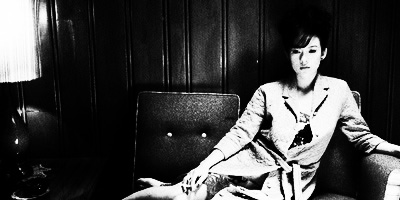 They’re the kind of filmic beauty that the detail of hi-definition viewing was invented for… though a look-see and a browse tells me that In The Mood For Love is only available on a Criterion Region A/US player only release… ah well, looks like it’s some more technical jiggery pokery to convince machines on this side of the pond to play nicely with such a disc.
They’re the kind of filmic beauty that the detail of hi-definition viewing was invented for… though a look-see and a browse tells me that In The Mood For Love is only available on a Criterion Region A/US player only release… ah well, looks like it’s some more technical jiggery pokery to convince machines on this side of the pond to play nicely with such a disc.Peruse the films here. Annoy yourself by looking at versions you can’t probably play on this side of the pond at Criterion here. Lose yourself in this world and its visions here.
continue reading -
Behind Union City – Amos Chan, Deborah Harry, Marcus Reichert and neo-noir accompaniments
 One of my favourite photography books is Behind Union City: it is a collection of photographs that accompany the Marcus Reichert directed film Union City, which starred amongst others a then rather famous Ms Deborah Harry and and a just becoming famous Pat Benatar.
One of my favourite photography books is Behind Union City: it is a collection of photographs that accompany the Marcus Reichert directed film Union City, which starred amongst others a then rather famous Ms Deborah Harry and and a just becoming famous Pat Benatar.I call it a photography book because it seems like more than a companion to a film – there’s an artistry, beauty and atmosphere to the photographs.
The world of Union City, as in the film, is presented here as one that belongs unto itself, that existed alongside the “real” 1950s era in which it is set but which had an aesthetic and palette of its own; neo-noir I think would be an appropriate phrase to use about now. A period reimagining rather than a recreation, to borrow from myself and photographer Nick Clements (see here at Afterhours).
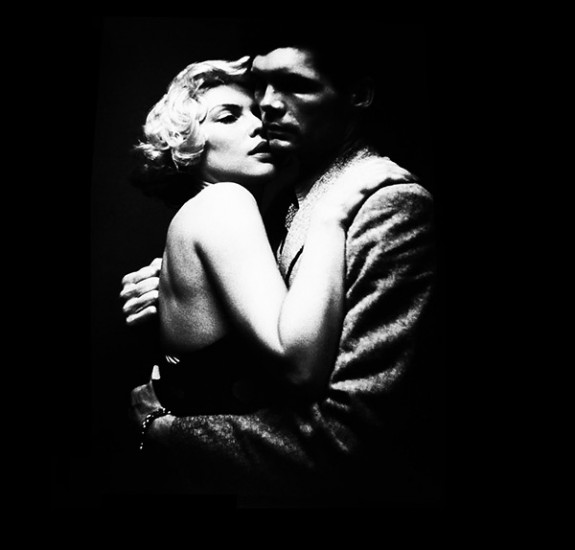
Some of the photographs are taken as the film was being shot but equally a fair number of them appear to have been created separately, sometimes candid behind the scenes images, sometimes posed images that reflect the world, story and style of the film but which also have a sense of being self-contained works – a film on paper, to borrow from photographer Lou Stoumen.Amos Chan, the photographer, had previously been a fine art photographer and teacher – numbering Nan Goldin and Phillip Lorca diCorcia amongst his students. The photographs in Behind Union City were taken at a point when Mr Chan was just about to become a commercial photographer and the images in the book seem like a fine synthesis of both commercial commission and creative expression.
There is a sense of the photographer’s own personal mindset/creative impulse being expressed within the book’s imagery, channelling, combining and collaborating with that of the vision of the film’s director Marcus Reichert and the work of actress/performer Deborah Harrry.
Which may well be another reason that I think of it as a photography book in it’s own right rather than pure film accompaniment, as such expression of personal, inner narratives could be seen to have become one of the defining characteristics of fine art photography.
(That sense of collaboration is carried through into the crediting of the book, where Deborah Harry, Marcus Reichert and Amos Chan are given equal billing on the cover.)
 Behind Union City was published in 2012 by Ziggurat Books International. It seems like a quite rare or not so widely known book in the world. Hopefully this particular piece of writing will in some small way help to change that.
Behind Union City was published in 2012 by Ziggurat Books International. It seems like a quite rare or not so widely known book in the world. Hopefully this particular piece of writing will in some small way help to change that.Peruse the book here and visit it at Ziggurat here.
continue reading -
Music for a Beat Girl…
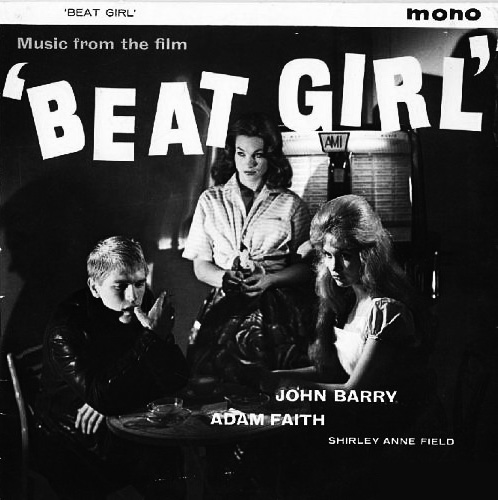 One of my favourites pieces of Afterhours-esque music is the Main Theme for the down in the Soho basements, cafe bar era 1960s film Beat Girl.
One of my favourites pieces of Afterhours-esque music is the Main Theme for the down in the Soho basements, cafe bar era 1960s film Beat Girl.Played by John Barry and his Orchestra (and written by Mr Barry), it’s a tooting, twanging, uplifting, sharp piece of music that while it accompanies youthful misbehaviour and insouciance by a Brit-Beat-Bardot-esque Gillian Hills in this film, could easily be the soundtrack for that eras spook, spies and thriller chases and scrapes through the night time, neon-lit roads of the heart of town.
Listen to the music accompanied by the introduction to Beat Girl here (and watch for a youthful, not quite filled out yet but still full of darkly brooding beauty Oliver Reed) or listen to it in higher, more faithful audio quality here.
 Peruse the (out of print and so a bit pricey) film here
Peruse the (out of print and so a bit pricey) film hereor it’s considerably more (at the time of writing) reasonably prices soundtrack here
. Not quite tuppence ha’penny but near enough.
continue reading -
Nights in Paris – Daniel Frasnay and a quiet sleaze
 When I was recently perusing and exploring the work of Daniel Frasnay, in particular his Les Girls book of 1950s-1970s Parisian showgirls and revues, I realised that I had owned and treasured a book of his photographs for many a year now.
When I was recently perusing and exploring the work of Daniel Frasnay, in particular his Les Girls book of 1950s-1970s Parisian showgirls and revues, I realised that I had owned and treasured a book of his photographs for many a year now.That book is Nights in Paris, originally published in 1954/1958 by A.W. Bruna & Zoon / Andre Deutsch.
It’s small, almost pocket-sized book that focuses on Paris’ nightlife in all its forms and Daniel Frasnay’s photographs accompany text by Jane Brusse (or does the text accompany the photographs ?).
This is a book that takes in all walks of nightlife from back when; showgirls, beatniks, gigolos, coupling, cabaret, transvestitism, streetwalkers, visiting servicemen, strippers, fairgrounds, bakers, allnight jazz, destitution, a police presence, drinking, nudity.
On first glance there’s a curious innocence and often a sense of carefree fun to the photographs. Despite all the above, it doesn’t appear to depict a world imbued with sleaze as say does Roswell Angier’s A Kind Of Life book that focuses on not dissimilar aspects of life in Boston around the mid-1970s (see here at Afterhours).
That may well be a side-effect of the manner that over time the more salubrious aspects of life can come to be gain a sheen of curio respectability. It may be a reflection of the spirit of the ages in which the two books were created and captured in the negatives of their photographers.
 However, if you look closely, amongst the merry making that can be found in Nights in Paris, there is an undertone of something else amongst the apparent innocence: when I travel through the whole book, I am glad to leave by the end, to see the dawn rising over the newsstand and streets.
However, if you look closely, amongst the merry making that can be found in Nights in Paris, there is an undertone of something else amongst the apparent innocence: when I travel through the whole book, I am glad to leave by the end, to see the dawn rising over the newsstand and streets.The book is a fine snapshot of Parisian nightlife but that sheen of innocence is also just that; a sheen, a surface impression and alongside the laughter and smiles there is something unsettling.
I can’t quite say what that something is, it may be from something in the eyes and face of its subjects here and there. Maybe an awareness of the possible darker other sides of such escapism. That such things are unlikely to be a non-stop consequence-less merry-go-round.
A quiet sleaze indeed.
Peruse the book here. Visit further (translated) information on Daniel Frasnay here.
continue reading -
Grinderman / The Wild Bunch / grizzled light-catching…
Prior to the arrival of Grinderman, sometimes noir-esque writer Cathi Unsworth once said to me that The Bad Seeds (and Mr Nick Cave) look like The Wild Bunch…
That’s something that I think could be even more so said about Grinderman – as though the essence of The Bad Seeds had been condensed, filtered, sharpened.
(As an aside, to me Grinderman are like the untamed, fun, humourous kid – but not so young – brother of The Bad Seeds… No Pussy Blues, the first song I heard by them, still makes me laugh to think about it – later middle-age angst and frustration encapsulated in 4 minutes and 23 seconds).
…and that Wild West-esque comparison holds true in terms of this particular “gang” (they even have the requisite baby faced member in Martyn P. Casey).
The photograph / grizzled light-catching above is by Mr Steve Gullick – a fine photographer and one time proprietor of Loose Lips Sink Ships magazine. Something of a favourite shutterbugger around these parts – he has a certain way with grain, lighting and atmosphere, his work stepping above and beyond common-day music and portrait photography.
Listen to No Pussy Blues here. Peruse it here.
continue reading -
Raymond Chandler’s The Big Sleep and how to make a paper movie by Lou Stoumen
 In the mid-1980s documentary film maker, photographer and teacher Lou Stoumen was commissioned to produce a series of photographs that would accompany Raymond Chandler’s classic, archetype 1930s detective fiction book The Big Sleep.
In the mid-1980s documentary film maker, photographer and teacher Lou Stoumen was commissioned to produce a series of photographs that would accompany Raymond Chandler’s classic, archetype 1930s detective fiction book The Big Sleep.The resulting photographs were intended to look like stills from a film of the book and the process of creating them shared a number of similar aspects with that of film making; casting, location scouting and so forth.
What he produced he called “a paper movie”.
In the book’s Photographer’s Note, Lou Stoumen talks about how he was a street photographer (he photographed New York’s Times Square for 45 years – work that was published by Aperture), that his camera eye eschewed fiction and that he had always though that there in the streets was where visual truth manifests itself.
 However, he came to realise that it didn’t matter that the book was fiction, that truth was truth even in costume.
However, he came to realise that it didn’t matter that the book was fiction, that truth was truth even in costume.In a way the finished product reminded me of the staged mod/scooter boy photographs that accompany The Who’s Quadrophenia album; although a photographic fiction, they seem like a definitive, minds eye observation of the spirit of the subculture from which they sprung.
I think the Lou Stoumen accompanied version of The Big Sleep quietly wandered into my mind at a pivotal, transitional point of my own Afterhours work. Not so much the photographs themselves, as the intention of creating a film on paper.
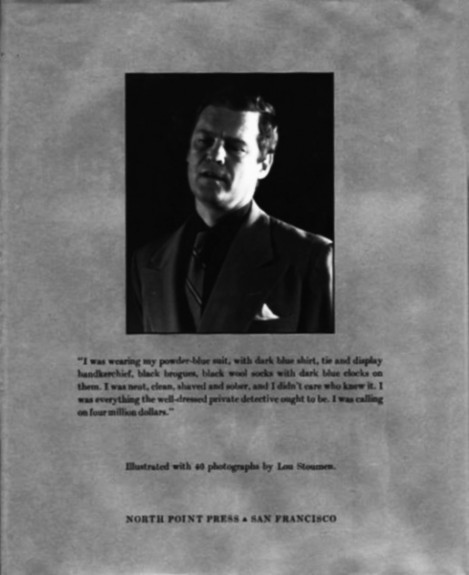 It helped move my own Afterhours work towards where I had always wanted to be; not so much a document of particular scene or subculture, more a reflection of the filmic Soho noir that played behind my eyes, an expression of my own particular Soho of the mind.
It helped move my own Afterhours work towards where I had always wanted to be; not so much a document of particular scene or subculture, more a reflection of the filmic Soho noir that played behind my eyes, an expression of my own particular Soho of the mind.Peruse the book here.
View a selection of Lou Stoumen’s other work at Luminous Lint.
continue reading -
Great lost visions – Magic City
A brief precis: Magic City was a series that was set in late 1950s Miami and follows the stories that surround the owner of the (fictional) greatest hotel of the time and his battles with the mob, family, dames, showgirls, politicians, unions, the revolution in Cuba, the CIA…
Post Mad Men there seemed to be quite a slew of TV series that took as their aesthetic that kind of late 50s/early 60s American stylishness – or to borrow a phrase from Thomas Hines – that were populuxe-esque.
Few them seemed to quite live up to their inspiration (although I thought the short lived Playboy Club series showed promise)…
…until, well, I relatively recently discovered/saw Magic City.
Which at the moment, for my money, steps up to and over Mad Men’s mark.
To be honest though, I don’t think it’s probably really fair to compare and contrast the two: Magic City’s creator Mitch Glazer first wrote a version of the series pre the broadcast of Mad Men and it draws from his life growing up in and around the grand hotels in Miami, stories that he heard and things he saw.
It looks beautiful – this is a series where the screen is full of beauty, style, suspense, corruption, sexuality, greed, desparation, brutality and intrigue.
Quite frankly, it’s a work right up at the top of things – I discovered it at a time when Afterhours Sleaze and Dignity was recoalescing and its sense of glamour and its darker flipside seemed to help bring things together.
It was cancelled after just two series, which is a great pity to me and indeed the world of entertainment; one of those time where I thought if I had the money I would be putting it down on the table to help make and be able to see more of this world and its stories… though reading and re-reading about it just now I think it may have a future further life.
More about that possibly later around these parts…
Visit more information on the series here. Peruse it further here.
continue reading -
Bert Stern / Marilyn Monroe’s The Last Sitting: evanescence and photographic completion
I’m wary of writing about this particular book/s or photographs, for the sake of respect for those passed.
With that in mind, beyond a very brief background I’ll be concentrating on the story of a book and my visiting of it than a story of a life.
This is literally the last photographic sitting by the iconic actress Marilyn Monroe and over three days Bert Stern took 2571 photographs; something of a feat in such pre zero and ones lightcatching days.
In 2000 Schirmer / Mosel Verlag published a somewhat monumental 464 page book that collected every last one of those photographs.
To repeat a phrase that I seem use a fair bit around these parts, it is now out of print and costs a penny or two if you should wish to purchase or peruse it.
However, a few years back, via the magic of library systems (albeit and unfortunately not an overtly publicly accessible one) I was able to sit down in a quiet basement and undertake the task of taking in the book.
I was only to have the one chance and moment to do so – the book had travelled a fair distance from another collection of such things and was considered too rare and precious to be allowed to leave the walls of the building.
It is a tribute in a way to what a photography book can do – the gathering and representing of such a large body of work. Almost too much and too many images to comprehend at one sitting.
Now, it seems like an almost magical, unobtainable object. The situation in which I viewed it, the quality of the work and the scale of it all contributed to that, as may have he human emotion/story behind it but it’s more than that.
There was a magic at work in this Last Sitting and the book somehow captures that. Evanescence is a word that come to mind.
Tip of the hat to you Miss Monroe and indeed Mr Stern, wherever you both may be.
continue reading -
The Long Firm and a lovely bit of schmutter
 Here’s Mr Mark Strong in The Long Firm, wearing a lovely bit of schmutter.
Here’s Mr Mark Strong in The Long Firm, wearing a lovely bit of schmutter.The television adapatation of Jake Arnott’s The Long Firm, from 2004, is a fine piece of work – in fact the first three (of four) episodes are some of the best British television I’ve seen.
The series tells a set of stories concerning characters who are interlinked by their connection to Harry Starks – a gay “but not poofy” gangster who still adores a (now) broken Judy Garland and who is mired in his own personal and “work” problems that take in wayward lovers, corrupt Lords of the land, property deals gone bad…
The stories, as with much of Jake Arnott’s work, draw broadly from real life events and lives – the aforementioned past-her-peak Judy Garland, The Krays, Lord Boothby… but I think what it draws from mostly is the myth, glamour, corruption and stories of a London and Soho that is a character unto itself.
Ruby’s Story is a particular favourite, where Lena Headey plays a once minor film star, still all old school glamour in the face of the coming of swinging London and mini-skirt-ed upstarts. In it Ms Headey brings a swish and swirl of Diana Dors era style and a warm heart caught up in this appealing but actually very dark and hard world.
As an aside, below is the author of the original book, Mr Arnott, in a blink and you’ll miss him appearance during Ruby’s Story…
I think it would be fair to file The Long Firm alongside a set of films and television programs that have been pointers/touchstones for Afterhours Sleaze and Dignity in their representations of back-in-the-day Soho basement glamour (and grime); filed alongside suspects who are/no doubt will be familiar from around these parts The Small World Of Sammy Lee, The World Ten Times Over, Das Phantom Von Soho, Our Friends In The North etc.
Peruse the series here and the book
here.
continue reading

